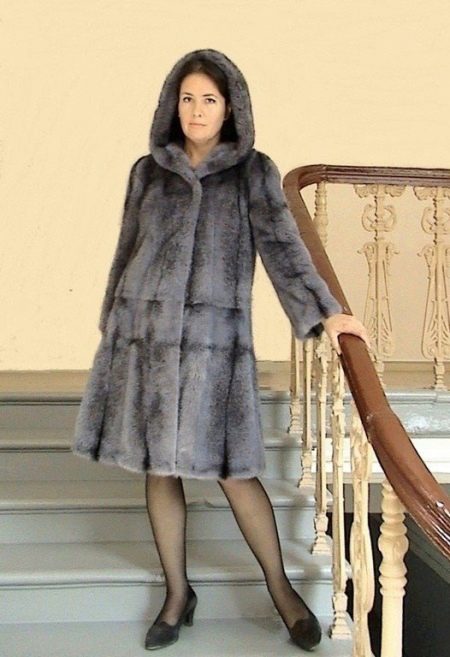Blue mink fur coat

Among the whole variety of color schemes for fur mink coats blue mink models firmly took the place of the recognized classics of the market. It is blue fur that is appreciated by the creators of fur coats for its sophistication, elegant look and nobility. Any woman wearing a blue mink fur coat elegantly emphasizes her own sense of taste and style.



Most of the breeds of mink, from the fur of which blue fur coats are sewn, live in the north of the European and American continents. Breeders and breeders have long discovered that the genes of different breeds, when crossed with each other, give a variety of color mutations. This interesting genetic feature is willingly used by designers who create fur coats of breathtaking beauty shades.


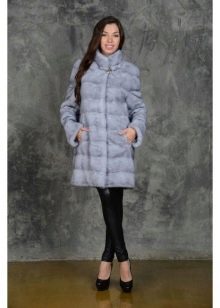
Features and Benefits
Blue mink fur appreciated not only for a unique color, but also for the highest performance characteristics. Fur coats made from it are distinguished by the highest strength and resistance even to the most severe cold weather, and a fluffy and very thick undercoat adds moisture resistance to the product. At the same time, the fur itself remains smooth, pleasant to the touch, shiny and silky.


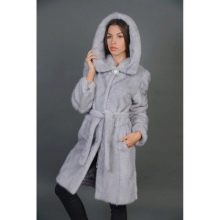
The exclusive status of blue mink fur could not but affect the cost of the works of design art created from it - such coats can cost significantly more than analogues made from fur of other colors. At the same time, it is necessary to strictly adhere to the storage conditions of fur products, otherwise the owner of the fur coat risks noticing that her favorite outfit has begun to turn yellow.

Models
Given the characteristic features of the color blue mink, against the light background of the fur of which darker stripes running down the back stand out clearly, the creators of fur coats got an excellent opportunity to freely use the longitudinal cut.This has the most favorable effect on the variety of styles in length - both long, reminiscent of a strict coat originally from England or non-fitted models, and cropped fur coats are in fashion.

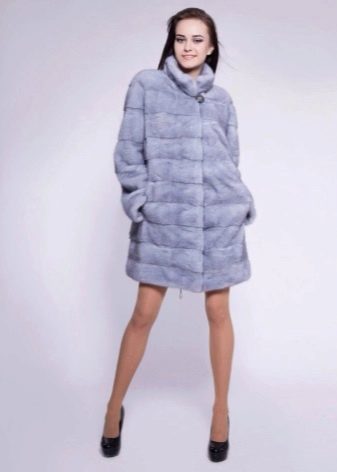
At the same time, the same color characteristics allow fashion designers to actively exploit both the cross cut, in which all mink skins are laid horizontally, and mixed. In this case, only a part of the surface of the fur coat is formed with a cross. As a rule, this is either top to the waist, or vice versa - along the bottom of the hem. There are also experimental models in which the cross cut is used in the form of side inserts.
Blue mink fur coats look equally advantageous with a hood, with a stand-up collar, and with the so-called English collar. Regardless of the design solution of the upper part of the fur coat, it can be either straight or slightly flared.




Shades
Despite all the variety of variations in the color of blue minks, designers tend to divide all these shades into six basic categories:
- Sapphire. A classic color for fur from Scandinavia, it comes in both light and dark tones, there are also options in between.

- Silver blue. Basically, such fur is obtained in Finland and Russia. It is distinguished by a rather large size of skins of a silvery-blue hue with light gray echoes. An independent subspecies of "Silver Blue" is "crushed ice" - it is characterized by a clarified underfloor with an iridescent-smoky shade.

- Blue ice. The fur of this type is distinguished by a dark gray top and a thick blue fluff.


- Blue iris. Such furs are obtained from Aleutian minks. In many ways, it is similar to "sapphire", which is why it is also known as "steel sapphire". It has an ash-grayish or silvery-steel shade.


- Topaz (aka violet). The lightest variety of blue fur specially bred by Finnish geneticists.


- Crossing. It is characterized by dark spots in the form of a sacrum on a pale blue background. Alternative names: sapphire cross or iris cross.



How to choose?
Stylists have long noticed that blue mink fur coats are more suitable for brunettes and brown-haired women than for white-skinned owners of blond hair. In the latter, the complexion tends to visually merge with the fur of some breeds, so blondes should be approached with extreme caution when choosing a blue fur coat.
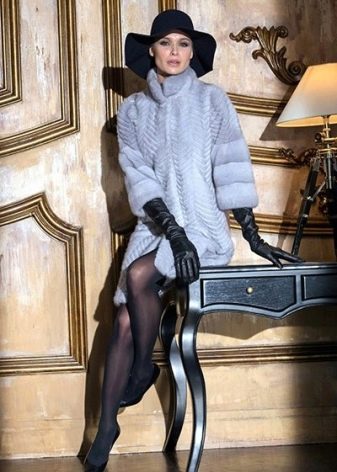

Truly high-quality blue mink fur has natural azure shades without the slightest sign of yellowness. The latter may appear on a fur coat that has hung in the store's warehouse for several months or was stored in violation of the prescribed conditions. You also need to check the quality of the dressing of the skins: the fur should easily wrinkle and straighten back.



Reviews
Customers who buy blue mink coats not for the first time are advised to adhere to the same rules as when choosing a mink coat of other colors - be sure to look under the lining to visually assess the size of the skins from which it is sewn and the quality of the seams.

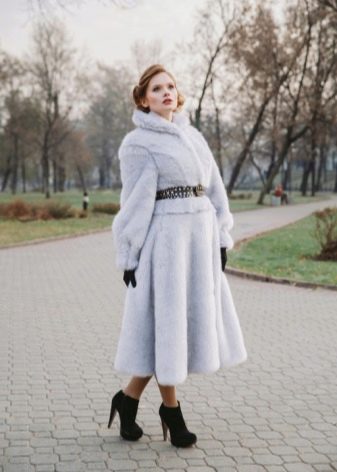
When choosing the style of a fur coat, each woman has her own preferences and priorities. The only model that is not particularly praised in blue mink fur is the autolady. This style is considered too mundane and utilitarian, as a result of which more practical types of fur are used for sewing coats of this model: the noble fur of a blue mink gets dirty quite quickly.
In most reviews, owners of fur coats are also advised not to try to save money by finding the cheapest model. A luxurious blue mink fur coat should look expensive - and cost accordingly.


Images
A cropped blue-gray fur coat with a hood is elegantly complemented by a leather belt without a buckle, which is tied in a deliberately casual knot.The cross cut blends perfectly with wide sleeves and becomes the basis of an image appropriate both on a romantic walk under the moonlight and in the office.
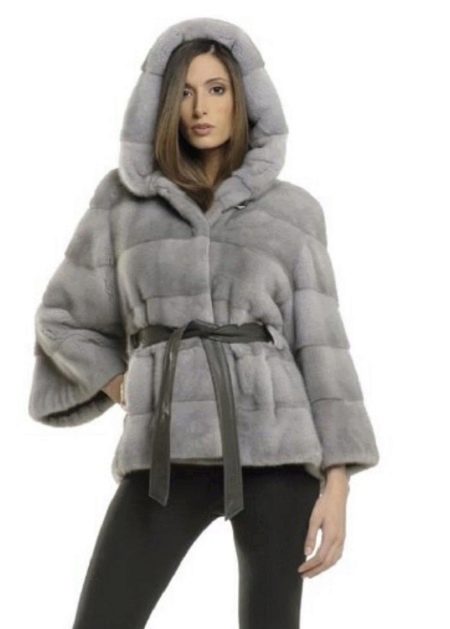
The color scheme of the fur coat is striking from the very first second. A neat silhouette, sufficient to wear this model even in the most severe frost, the length and elegant fastener under a spectacular collar - it will definitely not work to go unnoticed by a girl dressed in such a fur coat.

The model is sewn of fur of the darkest possible variety of cross-stitch mink. The bottom row of skins is sewn so as to form an edge in the form of a kind of shuttlecock, emphasizing the slimness of the female legs. The hood favorably sets off the complexion and protects the wearer of the fur coat even from gusts of wind.
